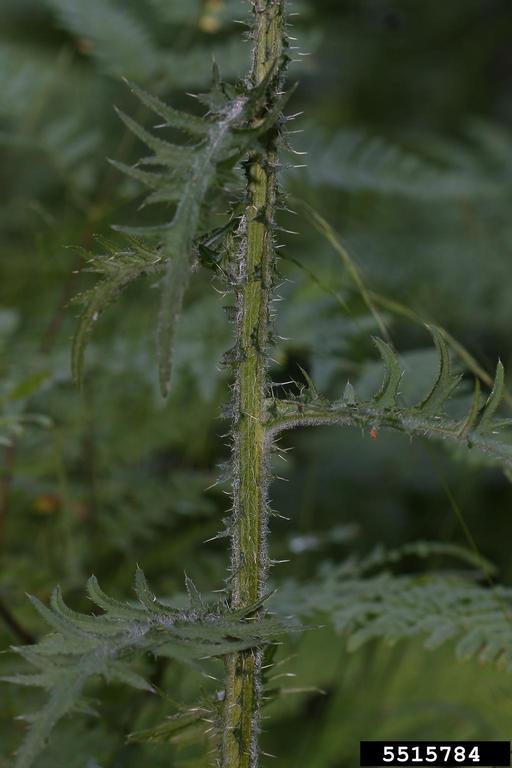Marsh Plume Thistle

Marsh Plume Thistle
(Cirsium palustre)
Priority: - Prevent / EDRR
Tags: Terrestrial | Biocontrol
Identification and Reproduction
Identification:
- Marsh plume thistle is a tall thistle that can reach up to 3 m tall.
- Stems will grow erect, rarely branching and covered in small spines.
- Spends its first year as a rosette, where leaves are narrow, spiny with dark purple edges. With maturity leaves will become deeply lobed. Upper leaf surfaces are sparsely hairy and on the underside they are densely covered in long hairs.
- Flowers are found in a dense cluster at the end of stems. They are often dark purple to lavender in colour. Bracts are green to purple-tinged, covered in cobwebby hairs. Outer bracts are often sticky.
Reproduction:
- Marsh plume thistle reproduces by seed and can be dispersed by wind, water and through soil movement.
- Each individual plant can produce up to 2,000 seeds.
Habitat & Ecology
- This thistle grows in wet soils and are well adapted to sand, sandy clay and clay soil textures.
- Has been observed on moist woodlands, riparian areas, roadsides, right-of-ways and recently disturbed moist sites.
- Currently there are concentrated infestations in the central interior of BC.
Impacts
Ecological:
- Attracts pollinators away from native flowers.
- It can form dense monocultures and because of its spiny nature will restrict movement of large animals and access to water.
- Suppresses the growth of native vegetation.
Management
Prevention is a high priority for this plant.
Mechanical/Manual Control:
- Plants can be removed through hand-pulling or mowing; if removed when flowers are absent plants can be left on site to decompose, if removed while flowers are present then remove flowerheads off site.
Biological Control:
- At the moment there is a weevil (Rhinocyllus conicus), that has been trialed as a biocontrol for marsh thistle.
Resources
Download A Guide to Weeds in British Columbia for Marsh Plume Thistle here.
Header photo (Uwe Horst Friese).



